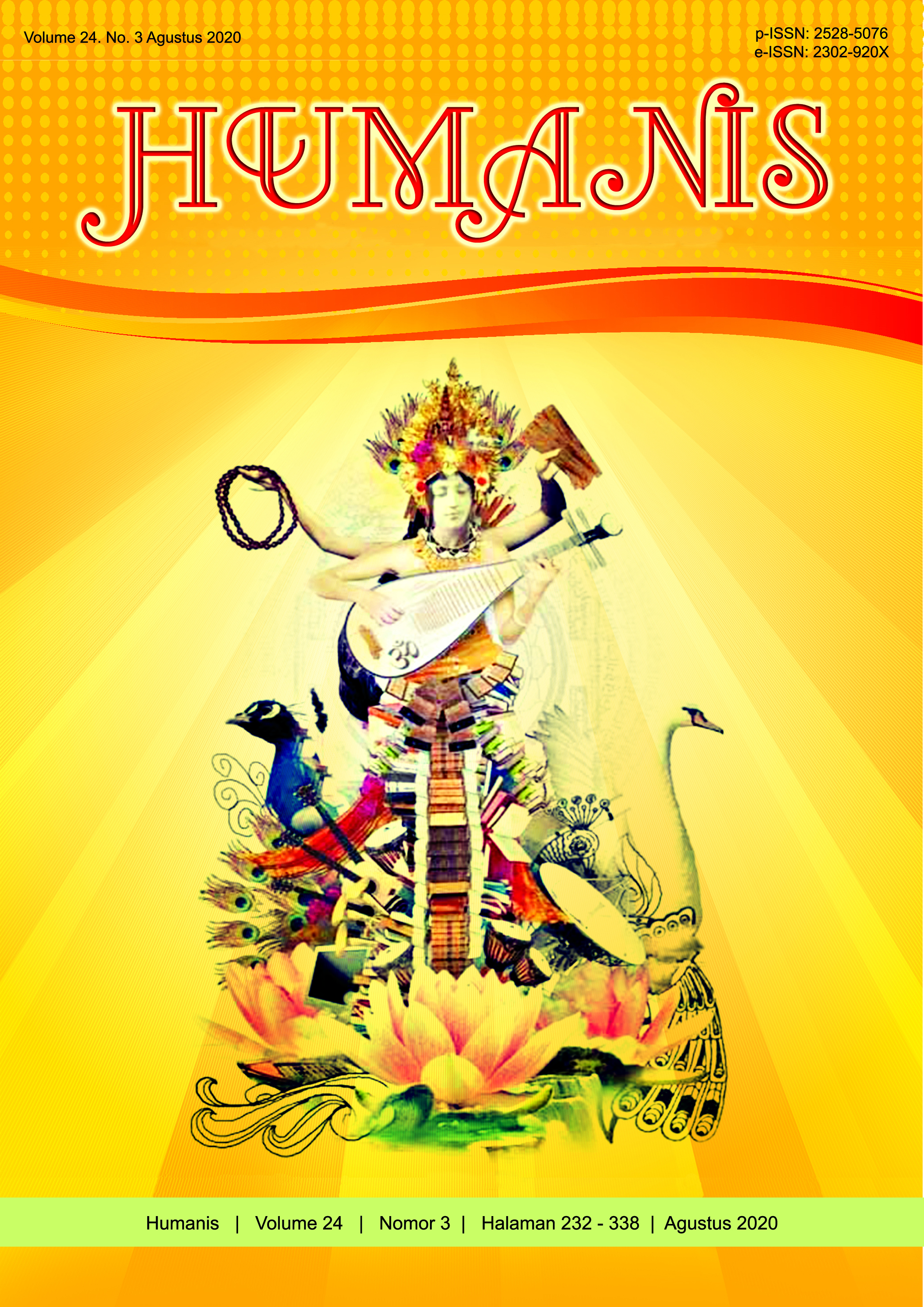Intrinsic Elements and Sociological Criticism of Green Book Movie
Abstract
The aims of the study were to find out the content of intrinsic elements of the Green Book movie and criticize the movie from sociological perspective. The study used qualitative method. It applied the theory of literature specfically intrinsic elements of drama proposed by Diniejko (2010) and sociological criticism proposed by Rapaport (2011). The results of the study were, firstly, the intrinsic elements found in the Green Book movie are plots, character, dialogue, setting, conflict, theme and motif which support the deeper understanding of the internal part of the movie. Secondly, by conducting a sociological criticism, it is found that the movie is related to the social condition of America in 1962 and it has correlation with the situation faced by American white and black nowadays.
Downloads
References
Bobo, L. D. (2011). Somewhere between Jim Crow & Post-Racialism: Reflections on the Racial Divide in America Today. The American Academy of Arts and Sciences. Vol. 140, Issue 2, pp11-36.
Datesman, M. K., Crandall, J., and Kearny, E. N. (2014). American Ways: An Introduction to American Culture 4th Edition. Pearson, New York.
Diniejko, A. (2010). Introduction to the Study of Literature and Film in English. Uniwersytet Warszawski, Warszawa.
Fakhrurrazi, Basid, A., and Hamzah, M. Z. (2018). The Value of the Struggle of Difabel Children in Film Jembatan Pensil Based on Perspective of Sociology of Literature. Advances in Social Science, Education and Humanities Research. 280, pp430-438.
Fiedler, E., Jansen, R., and Norman-Risch, M. (1990). America in Close-Up. Longman, Essex.
Hall, M. R. (2014). The Negro Traveller’s Guide to a Jim Crow South: Negotiating Racialized Landscapes during a Dark Period in United States Cultural History, 1936-1967. Postcolonial Studies. Vol. 17, No. 3, pp307-319.
Hidayatullah. (2016). Slavery in Steve McQueen’s Movie ’12 Years a Slave’ (skripsi). State Islamic University of Alauddin, Makasar.
Indriani, D., Sili, S. and Ariani, S. (2019). An Analysis of Intrinsic Elements in Mama Film by Andres Muschietti. Journal Ilmu Budaya. Vol. 3, No. 1, pp13-14.
Johnson, A. (1965). The Negro in American Films: Some Recent Works. Film Quarterly. Vol. 18, No. 4, pp14-30.
Kim, M. M. (2002). Historically Black vs. White Institutions: Academic Development among Black Students. The Review of Higher Education. Vol. 25, No. 4, pp385-407.
Klarer, M. (1999). Introduction to Literary Studies. Routledge, New York.
Long, H. (2017). African Americans Are the Only Racial Group in U.S. still Making Less than They Did in 2000 [Internet]. The Washington Post, Available from: https://www.washingtonpost.com/news/wonk/wp/2017/ 09/15/african-americans-are-the-only-racial-group-in-u-s-still-making-less -than-they-did-in-2000/. [Accessed on October 3, 2019].
Marliana, R., Arafah, B., and Herawaty. (2018). Convicts Life in James Tucker’s The Adventures of Ralph Rashleigh. ESL-Journal on Interdisciplinary Studies in Humanities. 1(1), pp76-82.
National Public Radio, the Robert Wood Johnson Foundation, and Harvard T.H. Chan School of Public Health. (2017). Discrimination in America: Experiences and Views of African Americans. Available from: https://www.npr.org/assets/img/2017/10/23/discriminationpoll-african-americans.pdf. [Accessed on October 4, 2019]
Rakhshandehnia, S. A., Chafjiri, H. S., Hosseini, S. E., and Niaki, A. (2016). Sociological Criticism of the Novel “Abdul Motajali’s Confessions” by Najib Al-Kilani. Medwell Jornal on the Social Sciences. 11 (9), pp2018-2022.
Ramanathan, J. (2018). Literature as a Key to Understanding People, Society and Life. Cadmus. 3(4), 39-56.
Rapaport, H. (2011). The Literary Theory Toolkit: A Compendium of Concepts and Methods. Wiley-Blackwell, West Sussex.
Redden, C. L. (1964). The American Negro: An Annotated List of Educational Films and Filmstrips. The Journal of Negro Education. Vol. 33, No. 1, pp79-82.
Ricard, S. (2018). The Trump Phenomenon and the Racialization of American Politics. Revue LISA/LISA E-Journals. Vol. XVI, No. 2. DOI: 10.4000/lisa.9832.
Stephanie Li. (2014) 12 Years a Slave as a Neo-Slave Narrative. American Literary History. Vol. 26, Issue 2, pp326–331.
Stevenson, B. E. (2018). Filming black voices and stories: Slavery on America's Screens. The Journal of the Civil War Era. 8(3), pp488-520,560.
Vancoillie, L. (2018). How Did Racial and Socio-economic Inequality in the United States Contribute to Donald Trump’s Election? (Dissertation). Ghent University, Ghent.
Wilson, V. (2018). 50 Years after the Riots: Continued Economic Inequality for African Americans [Internet]. Economic Policy Institute, Available from: https://www.epi.org/blog/50-years-after-the-riots-continued-economic-inequality-for-african-americans/. [Accessed on October 6, 2019].


















